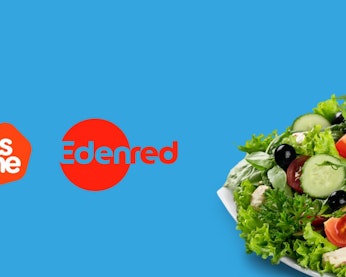
The future of employee benefits: HR trends in 2025
HR transformation in 2025
The role of HR has been undergoing a significant transformation. It is no longer confined to managing payroll, hiring and compliance in isolation. Instead, one of the main HR trends is the role's evolution into a strategic partner that is constantly collaborating with other departments. The focus of HR teams is moving towards driving organisational efficiency and enhancing the employee experience. This HR transformation is expedited by an increasingly complex landscape of diverse workforce needs.
This shift allows HR to influence broader organisational goals, like improving the employee experience, optimising talent management, and fostering a culture of well-being. This trend significantly influences what HR teams are looking for in employee benefits platforms; they are no longer simply looking for stand-alone systems, but for solutions that enable seamless collaboration between HR, IT, finance, and other departments.
This blog explores the key trends in HR’s evolution, and how these trends are shaping what HR teams look for in employee benefits platforms in 2025:
Personalised and flexible employee benefits
Whether it's flexible health plans, wellness programs, or financial assistance, today's employees increasingly expect the ability to select benefits that align with their individual needs. Companies that offer this level of flexibility in their benefits not only improve employee satisfaction but also increase their engagement. This, in turn, gives companies a competitive edge in today’s job market.
This is consequently shaping human resources trends, as companies increasingly seek HR platforms that enable benefit customisation. Platforms that offer a self-service model allow employees to adjust their benefits by themselves, whether it’s adding dependents to benefits plans or modifying pension contributions as needs evolve. This enables organisations to boost employee satisfaction, drive engagement, and foster a more inclusive culture.
Corporate benefits platforms can capitalise on this human resource transformation by providing customisable options, user-friendly self-service tools, and real-time support. For example, employee benefits platforms such as Personio, Benify, and Zest Benefits allow employees to tailor their packages based on individual needs. These platforms provide flexible options such as wellness programs, financial wellness tools, and professional development.
Better data security and HR compliance
As HR, legal, finance, and IT teams increasingly collaborate, managing sensitive employee data securely has become more complex. As a result, today’s collaborative HR landscape means that transparency in data handling is becoming an increasingly essential HR trend for building trust with employees and internal stakeholders.
HR decision-makers are prioritising employee benefits software that complies with data privacy regulations while ensuring secure, authorised access across departments. Compliant platforms offer role-based access controls, as well as advanced security measures like encryption, multi-factor authentication, and audit trails to protect employee data.
To ensure high levels of security and human resources compliance, corporate benefits platforms can fortify themselves with
Digital ID platforms also provide detailed logs of user activity, allowing HR, legal, and IT teams to track who accessed specific data and when. This transparency reinforces internal trust, supports regulatory compliance, and strengthens the organisation's overall security posture.
By investing in secure, compliant platforms, HR teams not only protect sensitive employee data, but also reduce administrative burdens. This promotes a more collaborative and transparent workplace.
Seamless integration and usability with other systems
As HR transformation takes it from a siloed function to an interconnected part of the organisation, decision-makers are increasingly seeking employee benefits platforms that can integrate with other key business systems.
Consequently, benefits platforms must be intuitive and accessible, not only for HR teams but also for employees and department heads. Some cloud-based employee benefits management software offer integrations with tools such as payroll systems, performance management platforms and learning management systems. This streamlines the flow of information between payroll, HR, and performance tracking.
For instance, Benify is a global employee benefits software that integrates with systems like payroll, HRIS, and performance management tools. This creates a more holistic view of the employee experience, reduces duplication of tasks, minimises manual work and errors, and improves data accuracy across departments.
As highlighted in the previous section, these integrations must comply with data safety and security regulations. Digital ID platforms that provide identity
Cost-effectiveness and measurable ROI in benefits management
In today’s economy, organisations are focused on maximising value while controlling costs. To justify investments, HR teams are looking for employee benefits platforms that can demonstrate measurable ROI. Examples include employee retention, employee engagement, and cost reduction.
The best employee benefits platforms allow for easy adjustments to benefits and pricing, because they help businesses stay competitive while aligning with both budget constraints and employee needs. For instance, Zenefits is a platform that helps businesses streamline HR processes, reduce administrative overhead, and foster a more engaged workforce. The result is cost savings and a higher ROI for the company.
Flexibility in pricing models is an increasingly important feature shaping employee benefits trends. Subscription-based or pay-per-use structures in customisable employee benefits platforms allow businesses to scale their benefits offerings based on changing needs. For instance, Gusto is a platform that offers flexible pricing options that help companies adjust their benefits as their workforce grows or shrinks, ensuring cost-efficiency without locking them into rigid plans.
Supporting employee mental health and well-being
The importance of mental health is growing, leading organisations to increasingly invest in platforms that provide resources for stress management, counselling, and overall well-being for employees.
Employee wellness and benefits platforms that offer flexible wellness programs help drive higher levels of satisfaction. This is because benefits management platforms that allow companies to offer wellness challenges, counselling, and mental health days empower employees to take an active role in their well-being. LifeWorks, for example, provides a comprehensive employee assistance program that covers mental health services, financial wellness, and work-life balance resources, improving both engagement and retention rates.
Other companies, such as

